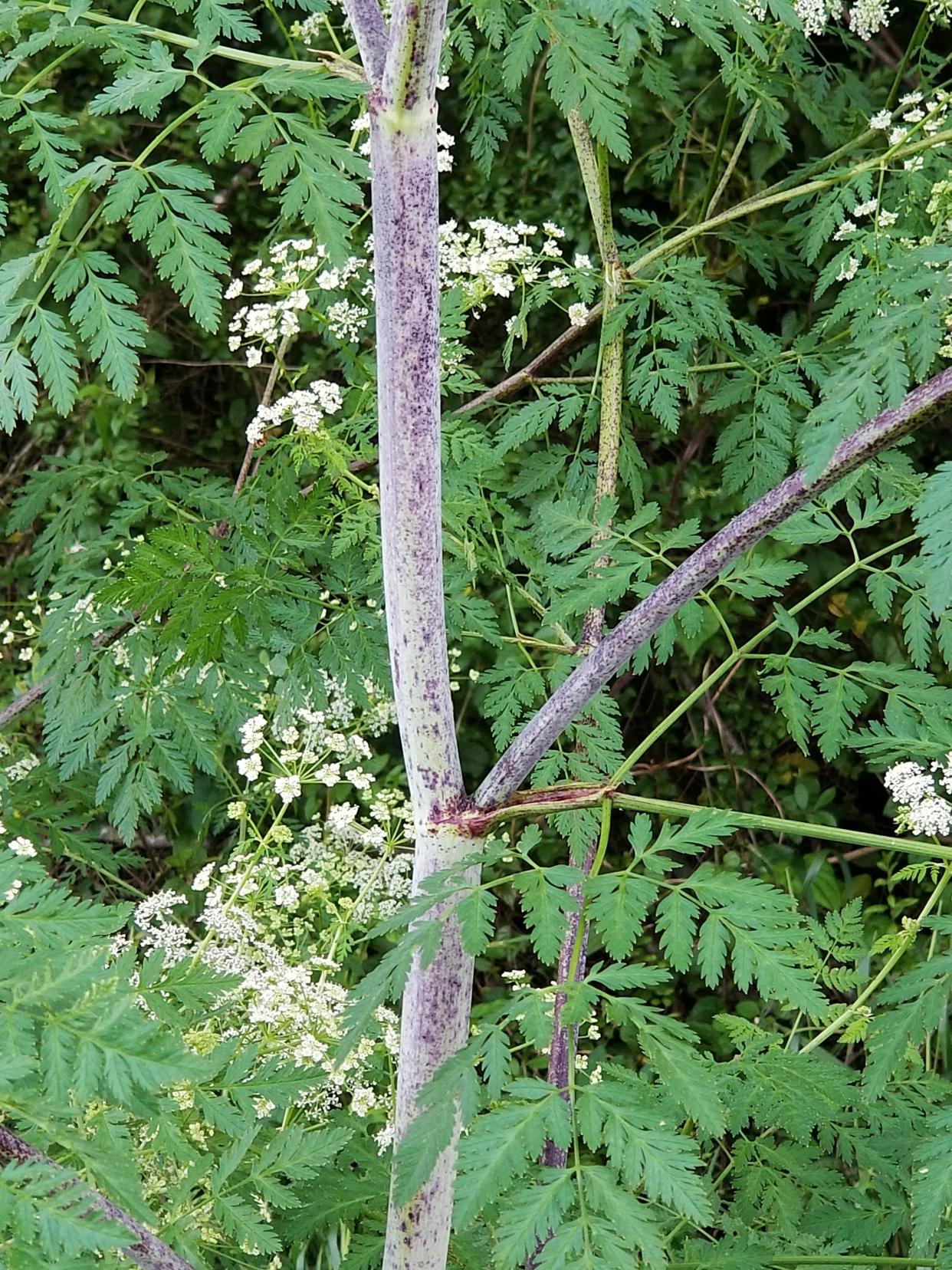Poison hemlock, wild parsnip: Back and rearing their ugly heads

Last year put poison hemlock on everyone’s radar and this year is no exception.
This white-flowered toxic weed is well above 6-feet tall at this point in the growing season, and in bloom. A defining feature is purple splotching on the stem. The unfortunate part about it is that chemical control is not a valid method for control of large, mature plants.
Poison hemlock is a noxious weed in Ohio because of its poisonous nature and easily spread seed. The toxins found in poison hemlock are alkaloids. Specifically, the most poisonous of the alkaloids is coniine. Essentially, the smallest dose can cause respiratory failure and death. The diaphragm, the muscle sitting directly under the lungs, contracts and relaxes, which is what cases exhalation and inspiration. The coniine prevents the muscle from getting the brain signal to contract/relax, thus preventing a breathing pattern.
Know the life cycles of poison hemlock
Poison hemlock is a biennial, meaning it completes its lifecycle over the course of two years. The first year it will germinate and form a rosette of leaves. This stage is when the weed is most vulnerable to chemical control. The second year the plant will come back, start off as a rosette, and bolt. The rosette stage in the first and second year is when chemical control needs to take place.
The most effective chemical control will be a triclopyr and 2, 4-D mixture. Once the plant starts to bolt in the second year, chemical control becomes increasingly difficult. Many herbicides have a height limitation on the weeds they can control; once the weeds mature beyond that, manual control is the best option.

For those of you with mile-high infestations, not to worry, you’re not alone. Like I mentioned earlier, now is the time for manual removal. Unfortunately, we cannot recommend bush-hogging or weed-eating the plant because such voracious destruction of plant materials can lead to small particles being suspended in the air that can enter your bodily systems through mucosal membranes (eyes, nose, mouth).
While not everyone will have a skin-contact reaction to touching poison hemlock, it’s still better to be safe than sorry. The best way to remove poison hemlock would be to suit up with long sleeves, pants, closed-toe shoes, gloves, safety glasses and a way to protect your nose and mouth.
Cut it this summer; watch out for wild parsnip, too
Using long-handled garden shears or a long knife, you can cut the plant down. You can try to apply herbicide to the remaining plant materials. Poison hemlock likely will try to bolt again this summer, and you can go ahead and cut it back. Just remember where the plants are so you can chemically treat in March 2023.
When trying to dispose of poison hemlock, options are limited. Composting isn’t the greatest way to go because you may end up handling it with bare hands. Burning also shouldn’t be you disposal method. If you only have one or two plants, you can put them in a trash bag, let them bake in the sun, then toss in the trashcan. Large stands of poison hemlock can be buried.
Now, poison hemlock has a cousin by the name of wild parsnip. Wild parsnip looks almost identical, except for its flower is yellow in color, not white. A very important distinction to make is this weed WILL cause a skin-contact reaction. All parts of the wild parsnip plant produce the toxin furanocoumarin. This compound, when in contact with skin, essentially damages the skin’s ability to protect again UV radiation and increases the skin’s sensitivity to the radiation (phytophotodermatitis). This leads to severe blisters and rashes once exposed to sunlight.
The signs of wild parsnip exposure may last up to two years. According to Cornell, if you come into contact with sap of wild parsnip, cover the area so it does not become exposed to sunlight and wash the area immediately. Keep the area covered for at least 8 hours.
These plants are not to be confused with giant hogweed, similar in toxicity to that of the wild parsnip, but much larger. If it comes into contact with eyes, it can also cause permanent blindness. This weed is not a widespread issue in Ohio but does remain on the Ohio Noxious Weed List due to its dangerous nature.
If you have questions on identification, snap a photo and send it to us – we’d be more than happy to help identify the weed. Please don’t try to bring us a sample for your safety and ours. Thanks for your vigilance out there!
Haley Zynda is an Extension Educator, Agriculture and Natural Resources for Ohio State University Extension. She can be reached at 330-264-8722 or zynda.7@osu.edu.
This article originally appeared on The Daily Record: Itching to get a handle on poison hemlock, wild parsnip
